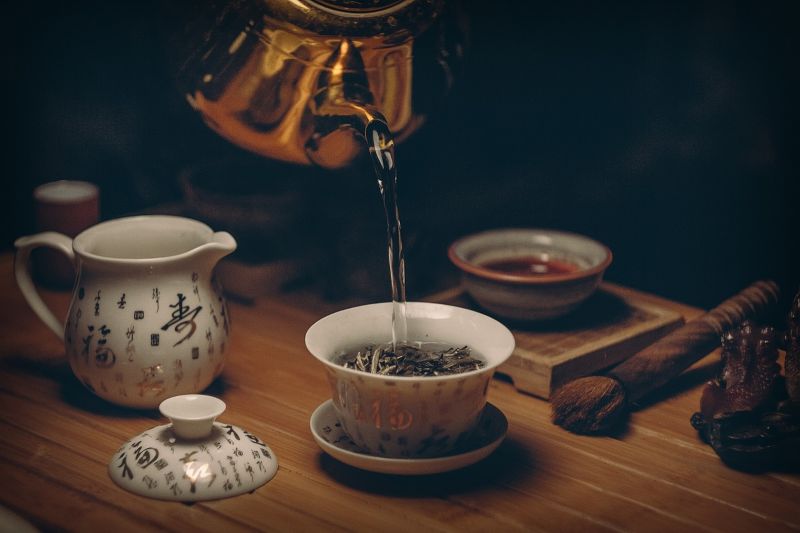If you’ve spent any time browsing wellness threads or Reddit health forums lately, chances are you’ve come across someone raving about palo azul tea. Maybe it was a friend who mentioned how it helped with bloating, or palo azul tea benefits blue hue this tea gets when it hits the light just right.
Whatever brought you here, you’re probably wondering: what is palo azul tea good for? And is it really worth adding to your daily routine?
Let’s have a friendly chat about it—just like two friends sharing a cup of tea on the porch.

What Is Palo Azul Tea And Where Does It Come From?
Palo azul literally means “blue stick” in Spanish, and that’s pretty much what it is—a small piece of wood from the Eysenhardtia polystachya tree, native to Mexico and parts of Central America. This tree has been part of folk remedies for generations. Grandmas and herbalists in Spanish-speaking homes have passed down its use for urinary and kidney health. (palo azul tea benefits in Spanish: “bueno para los riñones y el sistema digestivo”.)
When you brew the bark in hot water, the result is a tea that can shift into shades of blue when sunlight hits it. It’s like nature’s little science trick. But the real magic lies in what it can do for your body.
Palo Azul Tea Benefits For Liver Health: A Gentle Cleanse From Within
Let’s talk about the liver. It’s like the overworked bouncer at the club of your body. It filters toxins, breaks down fats, and keeps things running smoothly behind the scenes.
Some people turn to palo azul tea for liver support. Why? Because of its antioxidant and anti-inflammatory properties. These compounds may help protect liver cells from damage. In traditional Mexican medicine, palo azul was often used when someone had digestive trouble or a bloated belly after a heavy meal—hinting at its connection to gut and liver health.
A lot of Reddit users mention how they feel “lighter” after drinking it for a few days. While it’s no miracle drink, the mild diuretic effect might help your liver and kidneys flush out excess salt and water.
Personally, I started sipping it after family BBQs, where the plates are stacked with birria tacos and queso. Within hours, that bloated, heavy feeling would ease. That’s when I realized—this wasn’t just an old folk tale. There’s something to it.
So, if you’re someone who struggles with feeling sluggish or puffy, especially after rich meals, palo azul tea benefits for liver health might be something worth trying.
Palo Azul Tea Benefits Weight Loss Goals In Subtle, Supportive Ways
Here’s the truth: no tea by itself will make you drop 20 pounds. But palo azul might gently support your weight loss goals in realistic ways.
Because it’s a mild diuretic, it can help reduce water retention. That means if you’re holding onto a lot of excess fluid (think: salty foods, PMS, or long flights), this tea may help you shed that “puffy” look. Some people notice their rings fit better or their face looks less swollen after just a couple of days.
Also, it’s caffeine-free and has almost no calories, which makes it a great choice if you’re replacing sugary drinks. That small swap alone can help your calorie count stay in check.
One woman I spoke to from El Paso shared that she drank palo azul daily during her intermittent fasting window. It helped keep her full, and she swore it helped curb late-night snack cravings.
So while it’s not a fat burner, palo azul tea benefits weight loss when used alongside a balanced diet and movement. Think of it like a teammate, not a magic wand.

Palo Azul Tea Benefits For Skin: Beauty Starts From the Inside
Now let’s talk glow-up.
We all want clear, calm skin—and sometimes, what we put in our bodies makes a bigger difference than what we put on it. When toxins build up or the kidneys aren’t filtering properly, it can show up on your face: breakouts, dullness, puffiness.
This is where palo azul tea benefits for skin come in. Thanks to its detox-like effects and ability to promote hydration, some folks see a clearer complexion after a few weeks of regular drinking.
Here’s a personal story: A friend of mine in Arizona started drinking palo azul daily during a heatwave. Not only did she feel less bloated, but her skin started to look less congested—despite all the sweating and sunscreen buildup. She called it her “desert skin savior.”
Because palo azul helps you stay hydrated and encourages better elimination, your skin might show the rewards.
Palo Azul Tea Effects You Might Notice And What To Expect
So what happens after you start drinking palo azul?
Here are some common effects people talk about:
- More bathroom trips. It’s a gentle diuretic, so don’t be surprised if you’re peeing more often.
- A feeling of lightness. That post-meal sluggishness? Gone.
- Improved hydration. You may notice you feel less thirsty or dry.
- Subtle energy boost. Not from caffeine, but from less bloating and more fluid movement.
Most people feel the difference in about 2 to 3 days, especially if they’re replacing soda or coffee with it. If you’re consistent, palo azul can be a quiet helper in your daily routine.
Palo Azul Tea Side Effects To Be Aware Of
Even though palo azul is natural, it’s still a good idea to be mindful of how it affects you.
Here are a few palo azul tea side effects to know:
- Frequent urination. That’s part of its purpose—but for some, it can feel annoying.
- Lowered potassium. Diuretics can make you lose potassium. Consider eating bananas or avocado if you’re drinking this daily.
- Mild dizziness. If you’re sensitive to fluid shifts or have low blood pressure, go slow.
It’s also not recommended for pregnant women or anyone with kidney disease unless cleared by a doctor.
And if you’re on medication that already affects hydration or blood pressure, talk to your doctor first.

FAQs
1. What is palo azul tea good for?
Palo azul tea is often used to support kidney function, reduce bloating, help with liver health, and promote hydration. Some people use it as part of their wellness routine for clearer skin or to support weight loss.
2. Can palo azul tea help with drug tests?
While some users on Reddit claim it helps “flush the system,” there’s no strong scientific proof. Its diuretic effects might make you urinate more, but don’t count on it as a solution for detoxing specific substances.
3. Does palo azul tea have caffeine?
Nope! It’s naturally caffeine-free, so you can drink it in the evening without messing up your sleep.
4. How often should I drink palo azul tea?
Most people drink it 3–5 times a week, especially after heavy meals or when they feel bloated. It’s fine to enjoy daily if your body handles it well.
5. Where can I buy palo azul tea?
You can find it at Latin grocery stores, herbal markets, or online. Look for whole bark pieces, not just powder, for a stronger brew.
Wrapping It All Up
Palo azul tea is like that old friend who doesn’t say much—but shows up when you need them. Whether it’s helping your liver bounce back after greasy meals, calming your bloated belly, or adding a little glow to your skin, this humble tea has earned its place in many wellness traditions.
And the best part? It’s simple, natural, and steeped in culture. If you’ve been curious about palo azul tea benefits, this might be your sign to brew a cup and see how it feels.
For those who appreciate history, check out welliya.com for more context around herbs like palo azul.

